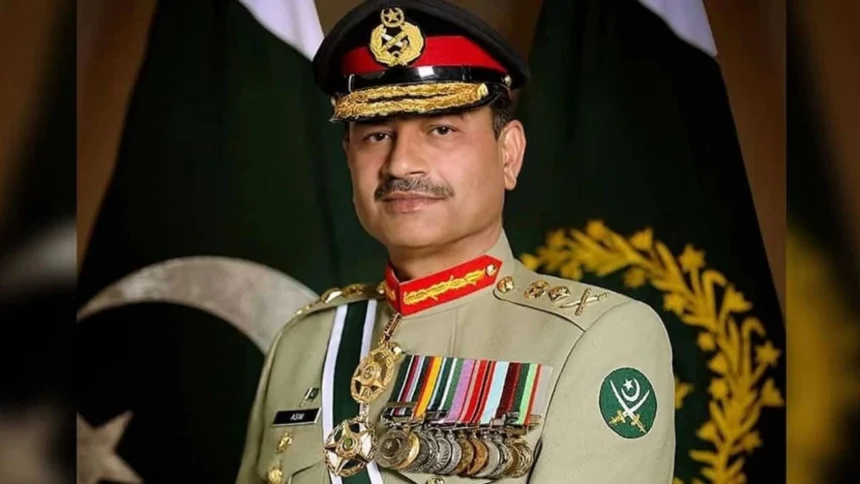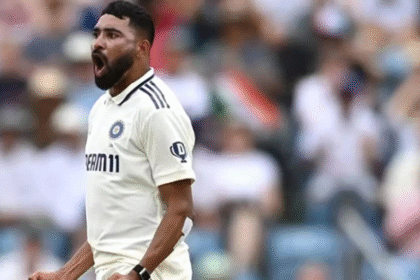India-Pakistan Diplomacy Adopts US-Inspired Strategy Under Asim Munir’s Command
Even though the White House has categorically denied reports that any foreign military leader, including Pakistan’s Army Chief Field Marshal Asim Munir, have been invited to the US Army parade in Washington, Indian news media reports claiming so caused palpable domestic agitation over what many saw as another sign of the US deepening its political and military ties with Pakistan.
India was already incensed over Washington ignoring Pakistan’s terror links, re-hyphenating its ties between Delhi and Islamabad and subtly endorsing Pakistan’s recent appointment to United Nations Security Council committees on terror and the Taliban, in addition to backing a host of other financial and diplomatic concessions for Islamabad.
But what really infuriated security officials and commentators most were recent remarks by General Michael Kurilla, head of the US Central Command who hailed Pakistan as a ‘phenomenal partner’ in the global counter-terrorism effort, reinforcing Islamabad’s relevance to American regional strategy.
Speaking at a US House Armed Services Committee hearing in Washington on June 11, Kurilla acknowledged Pakistan’s critical intelligence-sharing, coordinated operations, and ground-level counter-terror deployments – especially in the context of joint targeting of Islamic State cells and other transnational threats in the Afghanistan-Pakistan region.
“We have a strong military-to-military relationship with Pakistan. They’ve been a phenomenal partner in the counter-terrorism world,” Kurilla said. We have to maintain relationships with both Pakistan and India, as both are strategic players in their own right,” he added, emphasising regional balance and, to India’s chagrin, a hyphenation and equivalence in Washington’s ties with both nuclear-armed neighbours.
A cross-section of analysts and Islamabad watchers, however, said Kurilla’s remarks underlined the ‘harsh reality’ that Pakistan had, yet again, successfully leveraged its ‘tactical charm’ far more effectively than India had its size.
Pakistan’s strategic asset
For, while India banked on its vast market potential, a burgeoning economy and demographic heft, Pakistan courted influence through a cunning combination of military diplomacy and charm, access to Afghanistan, and a cultivated image of being a ‘necessary’ ally in the Islamic world. And while New Delhi increasingly commanded boardrooms and economic summits, Pakistan cunningly manoeuvred through backchannels and military-to-military intimacy, often outplaying Delhi in influence-per-dollar, despite its far smaller footprint.
While it was indisputable – even to Pakistan – that India was the far bigger power and growing, Islamabad projected itself simply as useful, manageable, and cooperative, especially in Western corridors, where charm and pragmatism in many instances, trumped integral clout.
Pakistan’s geopolitical location too has long been its most potent strategic asset, placing it at the crossroads of South Asia, Central Asia, and the Middle East. Sharing borders with India, China, Iran, and Afghanistan – and lying just a few hundred miles from the Persian Gulf – Pakistan occupies a pivotal position in the broader Eurasian chessboard.
Its proximity to Afghanistan ensured that Pakistan remained indispensable during both the post-9/11 war on terror and subsequent counterterrorism campaigns, especially as a logistics and intelligence conduit. For Washington, Pakistan offered not just location, but access – to Taliban intermediaries, to intelligence networks, and to key ground and air supply routes.
This location also gave Pakistan diplomatic leverage far beyond its economic or military strength. While India offered scale and markets, Pakistan offered reach, risk appetite, and strategic utility. Even today, in the shifting regional order following the US withdrawal from Afghanistan, Islamabad’s geography ensures that it cannot be easily ignored, however problematic its policies.
Furthermore, many analysts conceded that Pakistan, especially its dominating Punjabi elite had, over decades weaponised charisma and human connection to achieve their diplomatic, political and security goals, despite numerous and recurring obstacles and handicaps.
‘Studying what Americans like’
C. Christine Fair, professor of security studies at Georgetown University in Washington DC, said former president Pervez Musharaff had once autographed a picture of her beloved pit-bull terrier during a brief one-on-one meeting with her when she was a junior analyst at the Rand Corporation think tank in California. And, soon after he even had the Pakistan Army band play her favourite tune at a private event she attended.
“Over decades, the Pakistanis have astutely studied what Americans like and work hard on how best to cater to their preferences”, she said. US officials and senior military men from humble backgrounds, Fair added were ‘bowled over’ by the Pakistan Army’s feudal grandeur and showmanship and went away not only impressed and obligated but also sympathetic to Islamabad’s cause and determined to plead its case in providing it material and monetary assistance.
From the Cold War-era, till the Afghan War in the late 1970s, followed by the fight against the Taliban till 2021, Pakistan has consistently found itself at the crossroads of US foreign policy priorities. But, while other nations with strategic geography had faded into the background, once their usefulness to the US expired, Pakistan had displayed a knack for staying in the game with Washington, through relationship-building, that went beyond just mere military alignment.
Pakistani diplomats, military attachés, and lobbyists had repeatedly demonstrated their skill and agility in engaging their US counterparts, not just with policy briefs, but with genuine personal rapport. Prominent US analysts who had dealt with both Pakistani and Indian officials noted the warmth and generosity extended in interpersonal settings by the former, whether it was in hosting delegations with home-cooked meals in grand settings or via other personalised dealings with special emphasis on smaller, subtler courtesies that were widely appreciated by risible Americans.
India: Preachy?
India’s rise in the USs security and foreign policy matrix, on the other hand from the mid-1990s, was based on strong fundamentals: a 1.4 billion-strong population, a booming economic and information technology sector, a vibrant democracy, and above all, a shared strategic interest in countering hegemonic China’s rise in the Indo-Pacific and Indian Ocean Region.
Over the years, the US–India partnership was further buttressed by the latter importing over $20 billion worth of military platforms and assorted materiel from 2002-3 onwards, inking four bilateral ‘foundational’ defence agreements, joint military exercises and mounting bilateral trade, amongst numerous other parameters. US tech giants relied on Indian engineers and market access and American universities were full of Indian students who went on to secure top jobs in Silicon Valley, Wall Street, and across the US.
Additionally, there was the Indian-American diaspora – over 5 million – strong and arguably the most influential immigrant community in the US today. CEOs of Microsoft, Google, IBM, and Adobe, for instance, were ethnic Indians, while the expat’s political influence had proliferated exponentially with representation in Congress, the Senate and various state legislatures.
In short, India’s US strategy, founded on established systems, was built on firm foundations.
But analysts said that in its dealings with US officials, India often came across as ‘preachy’ or ‘normative’, particularly when compared to Pakistan’s more transactional, flexible, and charm-driven approach.
It tended to emphasise shared democratic values and ‘civilisational depth’ couching it in moral terms and was also inclined to react adversely to any perceived equivalence with Pakistan. Above all, it demanded recognition of its size, market, and geostrategic importance as a matter of right, not negotiation as it claimed in recent weeks to have gained economic equivalence with Japan.
‘Strategic utility without sermons’
By contrast, Pakistan played a more basic tactical game, focused on short-term deliverables: military bases (during the war on terror), access, intelligence and crisis management in Afghanistan. It also cultivated relationships through military-to-military ties, leveraging battlefield experience and joint operations, especially with regard to drone strikes and intermittently handing over Islamists responsible for attacking the US military and other American facilities.
Islamabad also did not moralise. It offered utility, not lectures – focusing on being useful in messy geopolitical theatres and simply getting the job done. It also showed a greater appetite for risk, unlike India, which often hesitated in taking tactical decisions, seeking outcomes in advance before committing itself to action.
“India’s messaging can appear somewhat self-righteous or slow to adjust, especially in Washington’s present transactional ecosystem under President Donald Trump” conceded a retired senior Indian diplomat, who requested anonymity. And while principled, India’s diplomacy, he said lacked tactical agility and narrative flexibility. Pakistan, on the other hand, despite weaker fundamentals, punched above its weight by projecting strategic utility without sermons.
And, where India brought scale, Pakistan brought the human touch and its geographical location; and in this instance, charm was not a weakness but a calculated strategy. In diplomacy, where perception often shapes policy, Pakistan’s ability to win hearts under the Trump presidency proved that this can secure an advantage where formal agreements cannot.
Charm in diplomacy is not just about being pleasant – it’s about the ability to build rapport, to create trust, and to paper over policy disagreements. During some of the most turbulent phases in US-Pakistan relations – whether over counterterrorism policy, Osama bin Laden living in a safe house contiguous to Pakistan’s military academy at Kakul in the northwest, nuclear proliferation to Libya and North Korea in the early 2000s or drone strikes-personal ties between key officials in Washington and Islamabad had eventually papered over ruptured interactions.
This, of course, does not mean that no challenges exist in the US-Pakistan ties; they endure, but in such a context, charm and beguilement were more than an asset. They became a survival tool and it’s a combination of these stratagems that kept open the doors of negotiation and reconciliation between Islamabad and Washington.
In conclusion, Pakistan cannot outspend or out-scale India in sustaining ties with the US, but it can and does out-network, out-relate and out-charm it. In a world dominated by hard edges, cold calculations and economic hegemony, charm may seem old-fashioned and underestimated, but for Pakistan, it keeps bilateral ties alive.
Also Read: 1 Powerful Tribute: Rajkot Markets Shut for Half Day to Honour Ex-Gujarat CM Vijay Rupani








